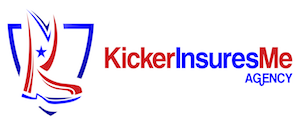 Are you looking for ways to lessen the cost of your car insurance without sacrificing your coverage? Do you want to find a way to make your monthly premium fit with your budget and needs? Of course you do! Let us help you look for ways to find the best car insurance for your situation.
Are you looking for ways to lessen the cost of your car insurance without sacrificing your coverage? Do you want to find a way to make your monthly premium fit with your budget and needs? Of course you do! Let us help you look for ways to find the best car insurance for your situation.
Doing so can help you select an insurance policy that gives you all the coverage you need without sacrificing your monthly finances. More importantly, you’ll understand more about the ins and outs of your insurance coverage.
See below for an in-depth guide on how to find the best car insurance, find trustworthy car insurance companies to work with, and so much more.
Guide on Finding the Best Car Insurance
1. Understand the Different Car Insurance Coverage Types
Most people don’t realize how general the term “car insurance” is. There are various types of car insurance coverages, and it would be advantageous for you to understand them all, so you know what you need.
Here are a few types of coverage that you should look for in the car insurance policies that you invest in:
- Comprehensive Coverage– This covers any damage to your vehicle that isn’t connected to an accident on the road. This includes things like theft, hail damage, hitting a deer, and so on.
- Collision Coverage– As the name would imply, this covers the damage that is affected by an accident.
- Personal Injury Protection– Covers the medical expenses that you and your passengers experience as the result of an accident. The fault does not matter in this situation.
- Uninsured Motorist– Covers the damage and injuries that occur when you’re hit by an uninsured driver.
- Guaranteed Asset Protection (GAP) — Coverage for if your vehicle is totaled in an accident. Pays for the difference between the value of your car and what you still owe on the car payment.
You must find a reputable car insurance company that offers these different types of coverages. Be sure that they explain their coverage in detail.
Don’t forget that personal car insurance is for personal vehicles, so if you have a company car or drive your car for business, be sure you get a commercial car insurance policy.
2. Look for Significant Discounts
There are usually ways that you can lower your auto insurance rates. These discounts allow you to lower the total price—and monthly premiums—without sacrificing your coverage.
It’s important to understand what types of discounts are out there and which ones you could qualify for. That way, you can take them to different providers and see if they offer it to their clientele. Or, even better, have a conversation with your independent insurance agent and ask them about what discounts are available to you.
Here are some of the most common car insurance discounts out there:
- Safe Driver Discount– Applied to those that use safe driving habits such as always wearing a seatbelt, driving within speed limits, etc. Most providers determine this by whether you have any violations on your record from the past few years.
- Accident-Free Discount– As the name would imply, this discount is handed out to drivers that have gone without an accident in the past 3 to 5 years.
- Low Usage Discount– Also referred to as a “low mileage” discount, this discount is applied to drivers that drive lower than a certain annual mileage.
Some discounts can apply to your status. This could be things such as:
- Military Discounts
- Senior Discounts
- Good Student Discounts
- Professional Discounts
- Away-from-Home Student Discounts
Keep in mind that all insurance carriers vary what they offer and the terms for such, so be sure to check with your insurance agent when shopping your coverage to see what discounts you may be able to get.
3. Understand the Role of Premiums and Deductible
For those of you that are shopping for car insurance for the first time, you’ve likely heard the terms “premiums” and “deductibles” before. But what do they mean?
Premiums refer to the amount of money that you’ll pay to have auto insurance coverage. This is either paid in full, in monthly amounts, or a combination of both. Paying in full can lower the total amount you owe, as you may not have the monthly admin fees associated with paying in full.
A deductible is an amount that you will pay before your insurance coverage kicks in for a claim.
For example, let’s say you have $5,000 in damage that needs to be repaired after an accident. If you have a $2,000 deductible, then that means you’ll be responsible for the initial $2,000, then your provider will pay the remaining $3,000.
4. Balance Your Deductible and Premiums
Now that you understand what premiums and deductibles are—if you didn’t already—it’s important to understand how they weigh each other out.
The deductible that you agree to pay for repairs to your car will play a role in your overall premiums.
If you choose to lower your deductibles, you can expect your premiums to increase. If you raise your deductible, then your premiums will likely decrease.
Be sure to take the time to talk these over with your insurance agent. Don’t be afraid to crunch different numbers to see which one makes the most sense. Find a balance that gives you great coverage in an emergency, but not so much that it sabotages your monthly rates.
5. Find the Insured Declared Value of Your Car
If you aren’t familiar with the term, an Insured Declared Value (IDV) refers to the highest amount that you will be able to claim under your policy. Every car has one.
Typically, the newer or more luxurious the car, the higher an IDV that you will have, because the insurance carrier will have more risk with respect to fixing the vehicle after a claim.
It’s important to know what the IDV is for your vehicle. That way, you can search for competitive rates that maximize the total that your car is worth.
Stop Overpaying for Car Insurance with these Tips
Now that you know more about these ways to help stop overpaying for car insurance, you must use these tips to your advantage.
Be sure to read this article for more information on the 8 most important auto insurance terms to know.
For more inquiries, please be sure to reach out via our contact us page or call/text us at (281) 487-9686 and we will be happy to assist you further.
